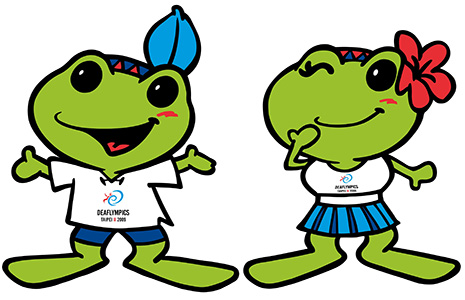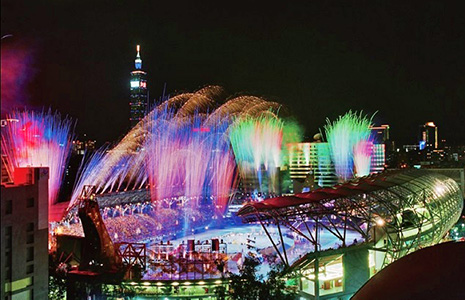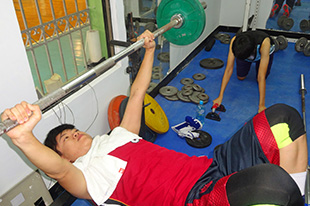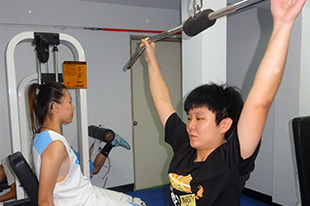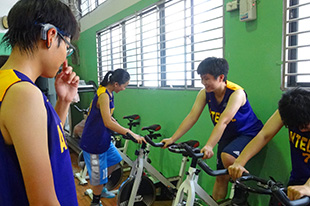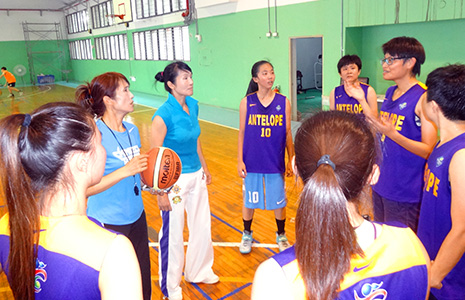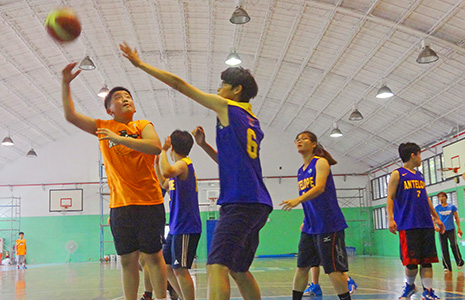|
1) Bids to Host Deaflympics in Taipei
Deaflympics is an important international sports event for the deaf. In the general assembly of International Committee of Sports for the Deaf held in Sweden in 2003, Taiwan strived to win the bid to host Deaflympics 2009 with Greece being the major competitor. At that time, Taiwan was unavoidably disadvantaged in the competition with the major powers in America and Europe. Taiwan delegation managed to distinguish itself, however, with the full preparations it had made: for one, "Taipei tree frog" was used as its mascot design along with a variety of advocacy products with Taipei's characteristics; secondly, while the speaker of the Greek delegation was a "hearing person" and gave his speech verbally, the representative of Taiwan delegation, Mr. Yu-ping Chao, made the presentation in sign language. With the concept of "Deaf yet self-reliant", Taipei managed to defeat Athens in the end (final vote tally: 52 to 32) and won the bid to host the 21st Deaflympics.
| |
|
|
|
| |
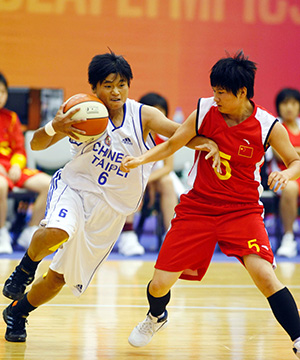 |
|
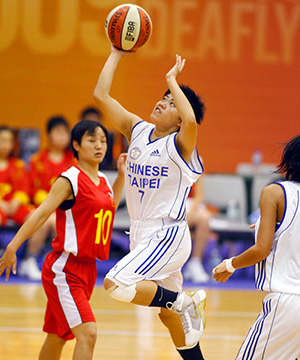 |
| |
Photo provided by Yi-cheng Chen |
|
Photo provided by Yi-cheng Chen |
| |
|
|
|
In September 2009, Deaflympics in Taipei opened in a beautiful and bright fireworks show! With the theme of "Power in Me", the 21st Deaflympics hoped to demonstrate the silent power of the hearing-impaired players and the beauty of Taipei! This was the game of the highest level that has ever been held in Taiwan history, as well as the first time that the games were hosted by an Asian country, which made it profoundly meaningful. Attended by 2,670 players from 81 countries and regions (together with the coaches and other staff, the number was over 4,000), Deaflympics in Taipei was the largest in scale in the Games' history, leaving a beautiful memory for all the people in Taiwan.
Although the event was held many years ago, the deep impact it has made for Taipei City can still be seen: the improvement in the overall environment and better wheelchair accessibility signify a huge step forward for Taipei as a "friendly city". And since it is hard for deaf people to hear the horns of cars, the concept of "giving way to pedestrians", which was promoted and developed during that time, is still influential to the citizens. Let's hope that Taiwan can host more sports events for all to participate!
| |
|
|
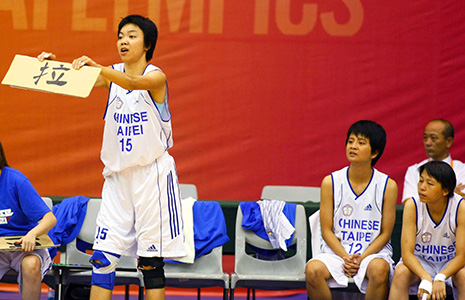 |
|
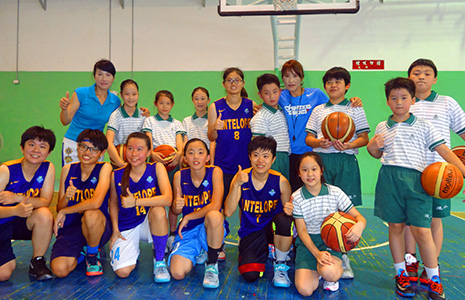 |
Photo provided by Yi-cheng Chen |
|
|
Reference:
- 閱讀臺北 第501期 http://english.gov.taipei/ct.asp?xItem=1025605&ctNode=24927&mp=100021
- 98年8月499期-聽奧別冊 http://reading.gov.taipei/ct.asp?xitem=993180&CtNode=5261&mp=100021
- "Rookies, Fly Faster—The Story of Taiwan Deaf Women's Basketball Team"
-- Published by ON Books Publishing / Issued by AND Books Publishing.
- 追夢的聆揚 部落格 http://tdwbl.blogspot.tw/2012/03/blog-post.html
- 中華民國聽障者體育運動協會 http://www.deafsports.org.tw/
2) Training Hard for the Deaflympics in Taipei
It is of course not easy to play in the Deaflympics as a member of the national basketball team. Before enjoying the benefits of such an identity, one has to first go through hard training, this team in particular. How could a team with no height advantage and a poor foundation make visible progress within a short four months? This was something even the players themselves did not dare to imagine. The simple fact was, however, just "do" it! Ms. Teng, the coach that took over the training at that time, told the players "to compete with themselves instead of others, and to make a little progress every day". The devilish training, therefore, started from "running"!
The training items listed in the following table showed how devilish the training was. In order to play for the national basketball team, these were the most basic drills.
| Training phase |
Training items |
Training objective |
| First month Devilish training |
| • |
Run around the 200-feet field for 50 times or 10 kilometers outdoors |
| • |
Run along the short side of the basketball court |
| • |
Run up and down the short side of court for nine times in 30 seconds and repeat the process for 15 times (which should be increased to 20 times gradually) |
| • |
Build muscles with basketball training partners from Far Eastern Men's Basketball Team |
| • |
Weight training:
Pitch ups, squat, lat pull-down, front kick, back kick, dumbbells, sit ups, back muscle training, etc. |
|
Cardiorespiratory endurance/
Muscular endurance/
Velocity endurance/
Basic basketball training |
|
After the month-long training, this detached team was finally put on track. What faced them next, however, was even harder training. Just like most people usually have three meals a day, the players jokingly called three of the major training items "meals". As agreeable as the coaches might seem to be, these "meals" were served regularly on the court every day in the morning, at noon and in the evening. These basic trainings were indispensable. The aim was to improve the players' skills and strengthen their endurance!
Let's have a look at these "three-great-meals" that were so indigestible to the players:
| Training phase |
Training items |
Training objective |
Training Meals
PART 1 |
| • |
Endurance running: Run around the basketball court for 80 times in a given time |
| • |
Lay up the ball chanting 12321 in a given time |
| • |
Penalty shooting and shooting practice |
|
Morning exercises |
Training Meals
PART 2 |
| • |
Basic layups on the left and right side of the basketball hoop, fake pass layups, turnaround layups |
| • |
Shooting drills (penalty shots, two-point field goals, three-pointers, bank shots) (100 successful shots for each item) |
|
Field practices |
Training Meals
PART 3 |
| • |
Defense and tactics drills
(demonstrated by the three coaches Ms. Pi-cheng Teng, Ms. Pi-yun Teng and Mr. Yi-te Chiang and the Far Eastern Men's Basketball Team) |
|
Drills |
|
As the date of the game drew nearer, however, more and more players quit the team for study, work, and family or simply lack the willpower to continue. As for the players that did not quit, many of them were suffering from injuries because of the intense training. By the later stage of the training, the number of players had declined drastically to nine.
How could such a team continue to play in the Games? Ms. Teng, the coach, encouraged the players and told them to pull themselves together and take on the responsibility. She even said that they could only finish the 40-minute game if each player played as two roles, or even three roles. The training at this late stage could well be called "mental toughness training". Since it is sweat, rather than tears, that matters on the court!
| Training phase |
Training items |
Training objective |
| Late-stage training |
| • |
1551 dash, a nightmare even for the Far Eastern Men's Basketball Team (please see the note) |
| • |
Friendly competitions |
|
| • |
Shift the focus from muscular endurance training to velocity endurance training |
| • |
Simulations games to increase real game experiences |
|
| Note: 1551 is short for the 1234554321 full court dash. The numbers here represent the number of continuous dash run. |
|
|


